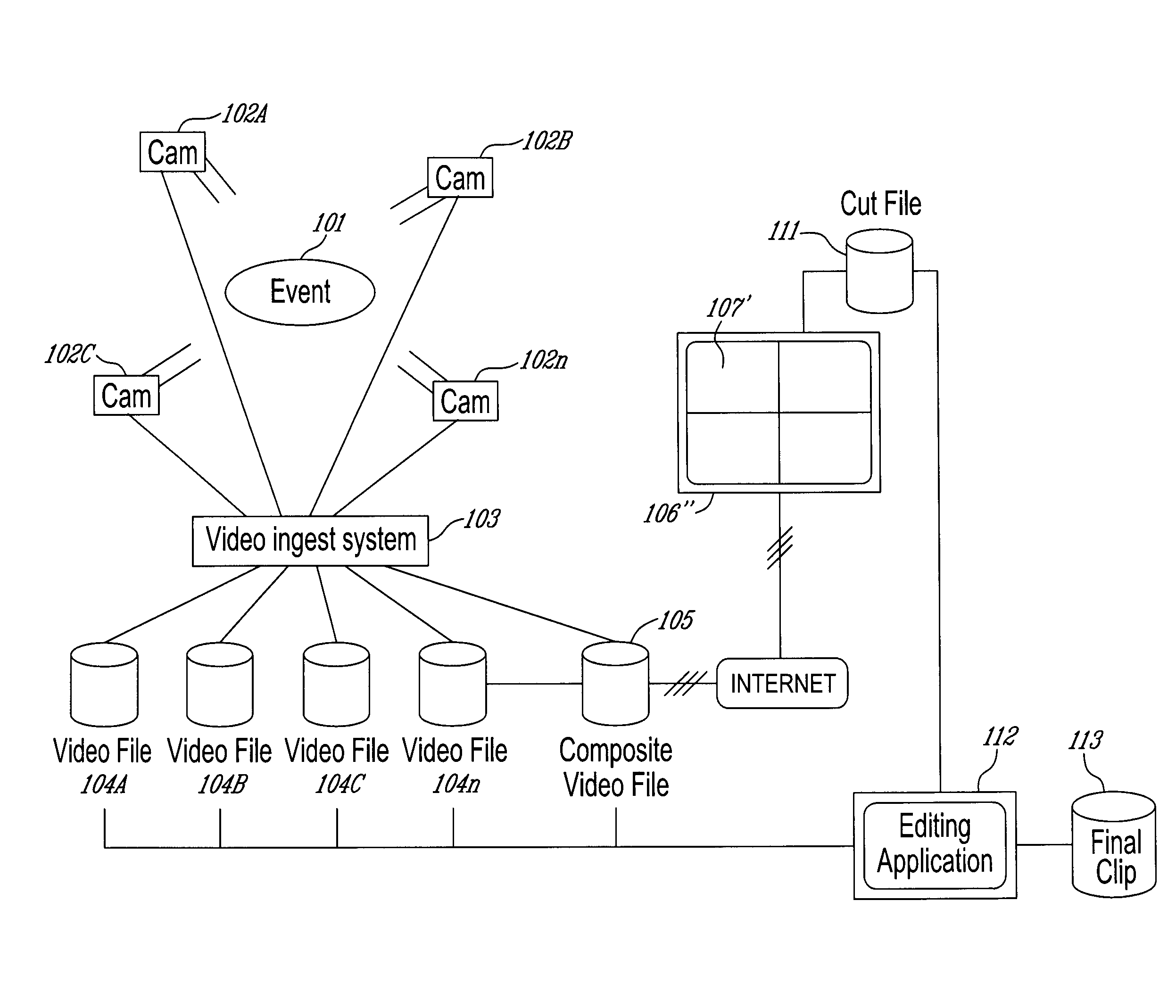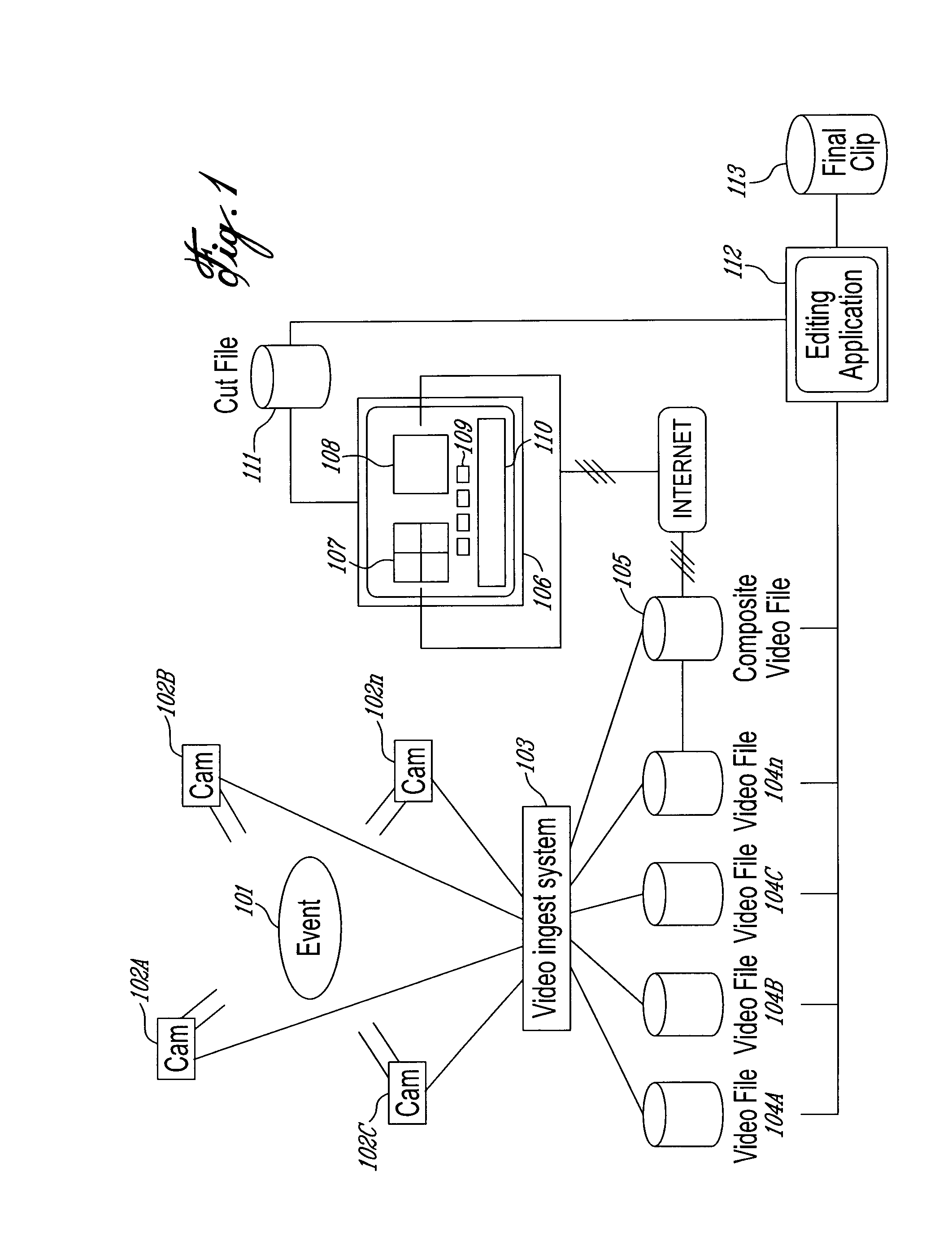Distributed synchronized video viewing and editing
a technology of synchronized video and video editing, applied in the field of distributed synchronized video viewing and editing, can solve the problems of requiring an exceptionally large amount of bandwidth for transmitting multiple streams of images, requiring a substantial amount of bandwidth, and expensive equipment used by editors or technicians, etc., and achieves the effect of minimal bandwidth
- Summary
- Abstract
- Description
- Claims
- Application Information
AI Technical Summary
Benefits of technology
Problems solved by technology
Method used
Image
Examples
Embodiment Construction
[0016]An overall diagram of a first embodiment of the invention is shown in FIG. 1. In the first embodiment, a live event 101, which can be, without being limited to, a live show or a sporting event, is viewed and recorded by a series of n cameras (where n=4 in the diagram) 102A to 102n. The images sent by the cameras 102A to 102n are captured by the video ingest system 103, usually located in a control room, without being restricted to it. The ingest system 103 stores the data provided by each camera in independent video files 104A to 104n. Those files will be typically of type .wmv, .flv, .mp2, .mp4, .mpg or .mov, without being limited to these very formats. In parallel or afterward, using the data saved in files 104A to 104n, the video ingest system 103 will create a composite video file and store this file in a Composite Video File Server 105, which embeds a composite view of Video Files 104A to 104n. This file will also be of type .wmv, .flv, .mp2, .mp3, .mpg or .mov, without b...
PUM
 Login to View More
Login to View More Abstract
Description
Claims
Application Information
 Login to View More
Login to View More - R&D
- Intellectual Property
- Life Sciences
- Materials
- Tech Scout
- Unparalleled Data Quality
- Higher Quality Content
- 60% Fewer Hallucinations
Browse by: Latest US Patents, China's latest patents, Technical Efficacy Thesaurus, Application Domain, Technology Topic, Popular Technical Reports.
© 2025 PatSnap. All rights reserved.Legal|Privacy policy|Modern Slavery Act Transparency Statement|Sitemap|About US| Contact US: help@patsnap.com



